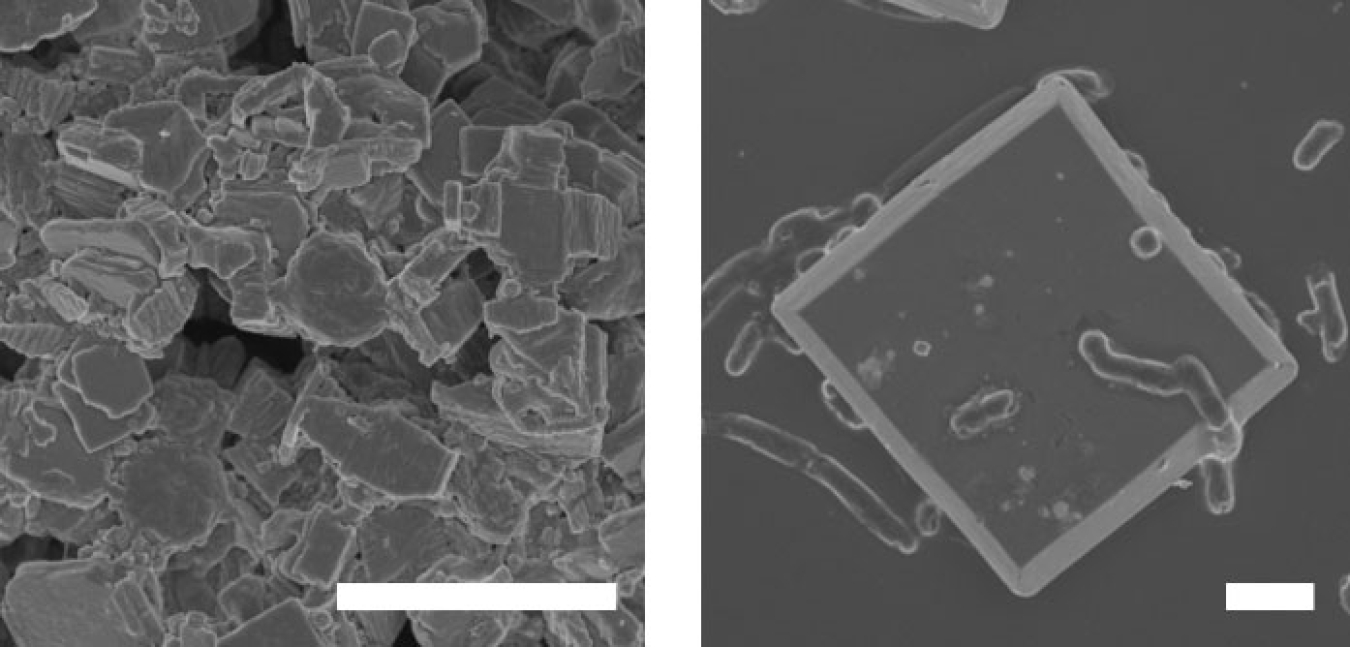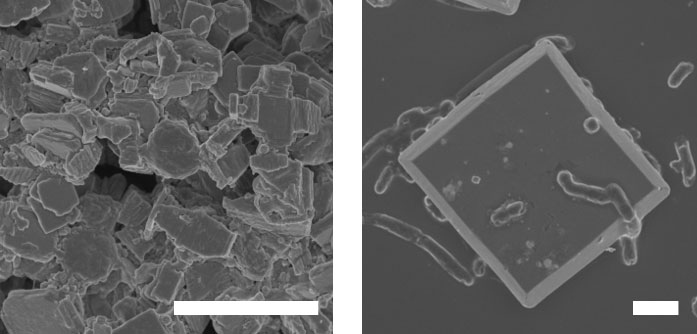
The Science
When thinking of ways to sustainably generate environmentally friendly products, bacteria might not come to mind. But in recent years scientists have created microbe-semiconductor biohybrids that do just that. These biohybrids merge the power of living systems to produce biological products with the ability of semiconductors used in solar cells to harvest light. In this case, semiconductors convert light to electricity that bacteria can collect directly. The bacteria use the solar energy to convert carbon dioxide into useful chemicals such as bioplastics and biofuels. But scientists do not fully understand how that conversion process occurs in such a tiny, complex system and whether the process can be improved. Now researchers have developed a way to image these biohybrids at the level of single cells or molecules. This allows researchers to better understand how these biohybrids function and how they can be modified to convert energy more efficiently.
The Impact
The new imaging platform combined two cutting edge methods to survey the bacterium Ralstonia eutropha. It simultaneously imaged, tracked, and quantified the multiple proteins in the cell while also measuring the flow of electrons. This allowed the researchers to correlate the properties of the cellular proteins and to show that light-generated electrons can directly move to bacteria with surprising efficiency. Researchers had previously thought this process included an intermediate step. The platform has potential far beyond the current study. Scientists can use it to study other biological-inorganic systems, including yeast, and other processes, such as nitrogen fixation and pollutant removal.
Summary
Biohybrid research has typically been conducted with bacteria in bulk – essentially a large number of cells in a bucket – emphasizing the overall yield of the value-added chemicals and the collective behaviors of cells. However, biology is very heterogeneous, and the individual cells are very different. As a result, they are ideally measured at a single-cell level. This research used a new imaging platform that combined multi-channel fluorescence imaging with photoelectrochemical current mapping. This multi-modal imaging approach provides quantitative assessments of protein behaviors and also a mechanistic understanding of how the electron transport occurs from the semiconductor to the bacteria cell. The researchers successfully differentiated the functional roles of two types of hydrogenases – one bound to the cell’s membrane, and a soluble one in the cytoplasm – that help metabolize hydrogen and drive carbon dioxide fixation. While the soluble hydrogenase is known to be critical for metabolizing hydrogen, the researchers found that the membrane-bound hydrogenase, while less important, actually facilitates the process and makes it more efficient.
In addition, the researchers obtained the first experimental evidence that the bacteria can uptake a large number of electrons from semiconductor photocatalysts. The team measured the electron current and found it be three orders of magnitude larger than what scientists previously thought, which suggests that future synthetic bacteria strains could be engineered to improve the efficiency of energy conversion. The researchers also discovered that membrane-bound and soluble hydrogenases play an important role in mediating the electron transport from the semiconductor into the cell. Meanwhile, not only can the cell accept electrons; it can also spit them out in the opposite direction, without the assistance of hydrogenases.
Contact
Paul Sammak
Department of Energy Office of Science, Biological and Environmental Research Program
[email protected]
Peng Chen
Cornell University
[email protected]
Funding
The research is supported by the Department of Energy Office of Science, Office of Biological and Environmental Research, Biological Systems Science Division.
Publications
Fu, B., et al., Single-cell multimodal imaging uncovers energy conversion pathways in biohybrids. Nature Chemistry (2023). [DOI: 10.1038/s41557-023-01285-z]
Related Links
Imaging platform illuminates biohybrids, Chemical & Engineering News
A multimodal imaging approach for interrogating energy-conversion pathways in biohybrids, Nature Chemistry Research Briefing
Imaging shows how solar-powered microbes turn CO2 into bioplastic, Cornell Chronicle
Scraped from https://www.sourcearu.com




